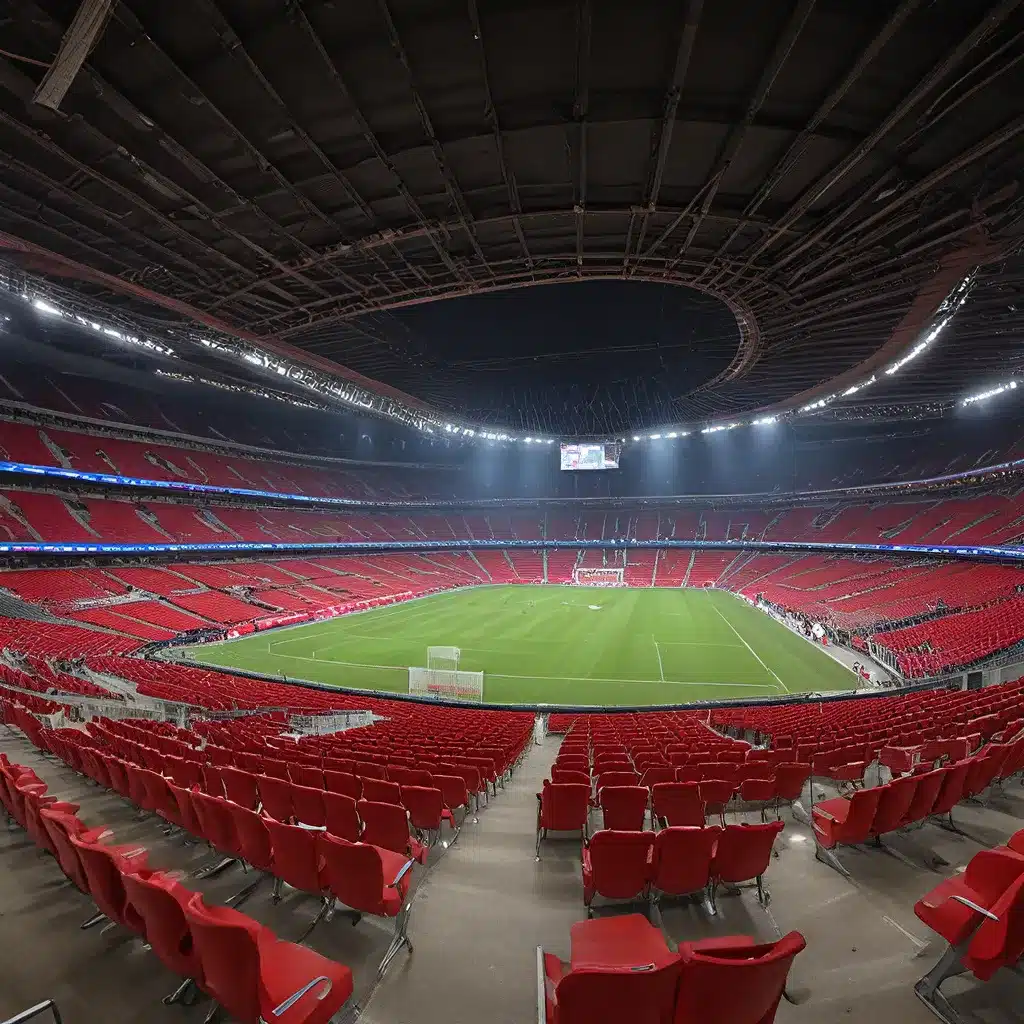
A Storied Landmark in the Heart of Italy’s Fashion Capital
The San Siro Stadium, also known as the Giuseppe Meazza Stadium, stands tall as a beacon of Milan’s rich sporting heritage. This iconic venue, nestled in the heart of the city, has been the home ground for two of Italy’s most successful and storied football clubs, AC Milan and Inter Milan, since its inauguration in 1926.
The stadium’s origins can be traced back to the 1920s, when the city of Milan sought to build a new, state-of-the-art venue to host its growing football fandom. The design of the stadium, created by the renowned architects Ulisse Stacchini and Alberto Cugini, blended traditional architectural elements with a modern, functional approach. The result is a striking and memorable structure that has become an integral part of Milan’s skyline.
One of the most notable features of the San Siro Stadium is its impressive size. With a capacity of over 80,000 spectators, it is the largest stadium in Italy and one of the largest in Europe. The sheer scale of the stadium is a testament to the passion and devotion of Milan’s football fans, who have filled the stands on countless occasions to cheer on their beloved teams.
Architectural Masterpiece: Blending the Old and the New
The San Siro Stadium’s architectural design is a harmonious fusion of traditional and modern elements. The exterior of the stadium is characterized by its distinctive curved roof and towering floodlight pylons, which give it a commanding presence on the cityscape. The concrete and steel structure of the stadium, combined with the intricate detailing of the facade, creates a visually striking and imposing edifice.
One of the most remarkable aspects of the San Siro Stadium’s design is the way it has evolved over the decades to keep up with the changing needs of modern football. Multiple renovations and expansions have taken place over the years, with the most significant being the addition of a second tier in the 1950s and the construction of the iconic Curva Nord and Curva Sud stands in the 1970s.
Despite these changes, the stadium has managed to retain its historical charm and identity. The blend of traditional and contemporary elements in the architecture creates a unique and captivating atmosphere, making the San Siro Stadium a true architectural masterpiece.
The Beating Heart of Milanese Football
The San Siro Stadium is not just a physical structure; it is the beating heart of Milanese football. The two clubs that call it home, AC Milan and Inter Milan, have a rich and storied history that is inextricably linked to the stadium.
AC Milan, one of the most successful clubs in the world, has won a remarkable seven UEFA Champions League titles and 18 Serie A championships, many of which were celebrated within the walls of the San Siro. The club’s iconic red and black striped jerseys and its passionate fan base have become synonymous with the stadium’s atmosphere.
Inter Milan, on the other hand, is the city’s other major football powerhouse, with an equally impressive trophy cabinet. The club’s blue and black colors and its devoted supporters have created a fierce rivalry with AC Milan, resulting in the legendary Derby della Madonnina matches that are always highly anticipated events in the Italian football calendar.
The San Siro Stadium has witnessed some of the most iconic and memorable moments in the history of Italian football. From the legendary players who have graced its pitch to the passionate celebrations of victorious fans, the stadium has become a symbol of the unwavering devotion and pride that Milanese football fans hold for their beloved clubs.
A Captivating Blend of Past and Present
The San Siro Stadium is not just a football ground; it is a living testament to the city of Milan’s rich cultural and architectural heritage. The stadium’s design, which seamlessly blends traditional and modern elements, reflects the city’s own transformation from a historical center to a global hub of fashion, design, and innovation.
Visitors to the San Siro Stadium can embark on a journey through the venue’s illustrious past, exploring its museums, guided tours, and interactive exhibits that showcase the club’s storied history and the stadium’s architectural evolution. The opportunity to step inside the hallowed halls of this iconic stadium and feel the energy of the passionate fans is a truly unforgettable experience.
As Milan continues to evolve and adapt to the changing demands of the modern world, the San Siro Stadium remains a steadfast symbol of the city’s enduring spirit and its ability to preserve its rich traditions while embracing the future. This captivating blend of the past and present makes the San Siro Stadium a must-visit destination for football enthusiasts and architectural aficionados alike, who can bask in the glory of this iconic Italian landmark.
Conclusion: A Timeless Treasure in the Heart of Milan
The San Siro Stadium is a true gem in the crown of Milan’s rich sporting and cultural heritage. Its impressive size, striking architectural design, and deep-rooted connection to the city’s football legacy have made it a beloved icon, not just for the people of Milan, but for football fans around the world.
As the city of Milan continues to evolve and adapt to the challenges of the modern era, the San Siro Stadium stands as a testament to the city’s enduring spirit and its ability to blend tradition with innovation. This iconic stadium is not just a venue for football matches; it is a living, breathing embodiment of Milan’s captivating story, inviting visitors to immerse themselves in the city’s rich history and vibrant present.
Whether you’re a passionate football fan or simply someone who appreciates exceptional architecture and cultural heritage, a visit to the San Siro Stadium is a must-do experience when exploring the wonders of Milan, the fashion and design capital of Italy.

